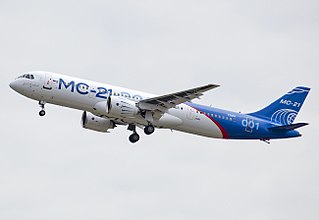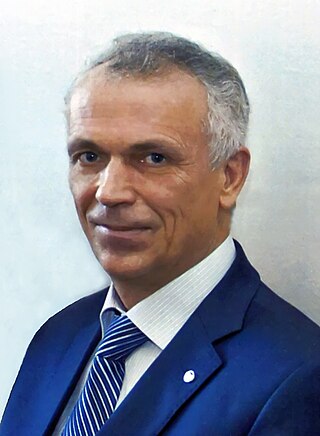

A testbed aircraft is an aeroplane, helicopter or other kind of aircraft intended for flight research or testing the aircraft concepts or on-board equipment. These could be specially designed or modified from serial production aircraft. [1] [2]


A testbed aircraft is an aeroplane, helicopter or other kind of aircraft intended for flight research or testing the aircraft concepts or on-board equipment. These could be specially designed or modified from serial production aircraft. [1] [2]


For example, in development of new aircraft engines, these are fitted to a testbed aircraft for flight testing, before certification. New instruments wiring and equipment, a fuel system and piping, structural alterations to the wings, and other adjustments are needed for this adaptation. [3] [4]
The Folland Fo.108 (nicknamed the "Folland Frightful") was a dedicated engine testbed aircraft in service from 1940. The aircraft had a mid-fuselage cabin for test instrumentation and observers. Twelve were built and provided to British aero-engine companies. A large number of aircraft-testbeds have been produced and tested since 1941 in the USSR and Russia by the Gromov Flight Research Institute. [2] [5]
AlliedSignal, [6] Honeywell Aerospace, [7] Pratt & Whitney, [8] and other aerospace companies used Boeing jetliners as flying testbed aircraft. [9]

A turboprop is a turbine engine that drives an aircraft propeller.

An aerospace manufacturer is a company or individual involved in the various aspects of designing, building, testing, selling, and maintaining aircraft, aircraft parts, missiles, rockets, or spacecraft. Aerospace is a high technology industry.

Aerospace is a term used to collectively refer to the atmosphere and outer space. Aerospace activity is very diverse, with a multitude of commercial, industrial, and military applications. Aerospace engineering consists of aeronautics and astronautics. Aerospace organizations research, design, manufacture, operate, maintain, and repair both aircraft and spacecraft.

Folland Aircraft was a British aircraft manufacturing company which was active between 1937 and 1963.

The Boeing C-135 Stratolifter is a transport aircraft derived from the prototype Boeing 367-80 jet airliner in the early 1950s. It has a narrower fuselage and is shorter than the 707. Boeing gave the aircraft the internal designation of Model 717, a name later assigned to a completely different aircraft.
A testbed is a platform for conducting rigorous, transparent, and replicable testing of scientific theories, computing tools, and new technologies.

The Yakovlev MC-21 is a single-aisle airliner, under development in Russia by the Yakovlev Corporation, a branch of the United Aircraft Corporation (UAC), itself a 92%-owned subsidiary of Russia's state-owned aviation giant Rostec.

The Honeywell TPE331 is a turboprop engine. It was designed in the 1950s by Garrett AiResearch, and produced since 1999 by successor Honeywell Aerospace. The engine's power output ranges from 575 to 1,650 shaft horsepower.

The Garrett TFE731 is a family of geared turbofan engines commonly used on business jet aircraft. Garrett AiResearch originally designed and built the engine, which due to mergers was later produced by AlliedSignal and now Honeywell Aerospace.

The General Electric GE38 is a gas turbine developed by GE Aviation for turboprop and turboshaft applications. It powers the Sikorsky CH-53K King Stallion as the T408.

The Gromov Flight Research Institute or GFRI for short is an important Russian State Research Centre which operates an aircraft test base located in Zhukovsky, 40 km south-east of Moscow. The airfield is also known as Ramenskoye air base.

The Honeywell/ITEC F124 is a low-bypass turbofan engine derived from the civilian Honeywell TFE731. The F125 is an afterburning version of the engine. The engine began development in the late 1970s for the Republic of China (Taiwan) Air Force AIDC F-CK Indigenous Defence Fighter (IDF), and it first ran in 1979. The F124/F125 engine has since been proposed for use on other aircraft, such as the T-45 Goshawk and the SEPECAT Jaguar, and currently powers the Aero L-159 Alca and the Alenia Aermacchi M-346. The F124 has a rather unusual design for a two spool gas turbine engine, using both axial and centrifugal compressors in its high-pressure compressor. There are currently only three production variants of the engine, although several more have been proposed throughout its lifespan.

Garrett AiResearch was a manufacturer of turboprop engines and turbochargers, and a pioneer in numerous aerospace technologies. It was previously known as Aircraft Tool and Supply Company, Garrett Supply Company, AiResearch Manufacturing Company, or simply AiResearch. In 1964, Garrett AiResearch merged with Signal Oil & Gas, to form a company renamed in 1968 to Signal Companies. In 1985, it merged with Allied Corporation, forming AlliedSignal. In 1999 AlliedSignal acquired Honeywell and adopted the Honeywell name.

The Boeing Phantom Eye is a high altitude, long endurance (HALE) liquid hydrogen-powered unmanned aerial vehicle developed by Boeing Phantom Works. The aircraft was Boeing's proposal to meet the demand from the US military for unmanned drones designed to provide advanced intelligence and reconnaissance work, driven by the combat conditions in Afghanistan in particular. In August 2016, the Phantom Eye demonstrator was disassembled for display at the Air Force Flight Test Museum.

The Boeing 720 is an American narrow-body airliner produced by Boeing Commercial Airplanes. Announced in July 1957 as a 707 derivative for shorter flights from shorter runways, the 720 first flew on November 23, 1959. Its type certificate was issued on June 30, 1960, and it entered service with United Airlines on July 5, 1960. A total of 154 Boeing 720s and 720Bs were built until 1967. As a derivative, the 720 had low development costs, allowing profitability despite few sales.

Arseny Dmitrievich Mironov was a Russian scientist, aerospace engineer, and aviator. He was one of the oldest researchers in aircraft aerodynamics and flight testing, a Gromov Flight Research Institute (GFRI) director from 1981 to 1985, a recipient of the Stalin Prize in 1948 and the USSR State Prize in 1976, and an honorary citizen of Zhukovsky.
Max Taitz was a Soviet scientist, engineer, and one of the founders of Gromov Flight Research Institute (1941). He was a doctor of engineering, a professor, and a recipient of the Stalin Prize, and the honorary title of Honoured Scientist of the RSFSR (1961).

Pavel Nikolaevich Vlasov is a Russian test pilot, engineer, one of the Gromov Flight Research Institute directors (2010–2017), chief of the Gagarin Cosmonaut Training Centre (2017–2021) and Hero of the Russian Federation.

N747GE is a Boeing 747 aircraft that was used by General Electric Aircraft Engines as a testbed for several of the companies jet engines between 1992 and 2017, including the GE90 for the Boeing 777, at the time, the world’s largest jet engine.